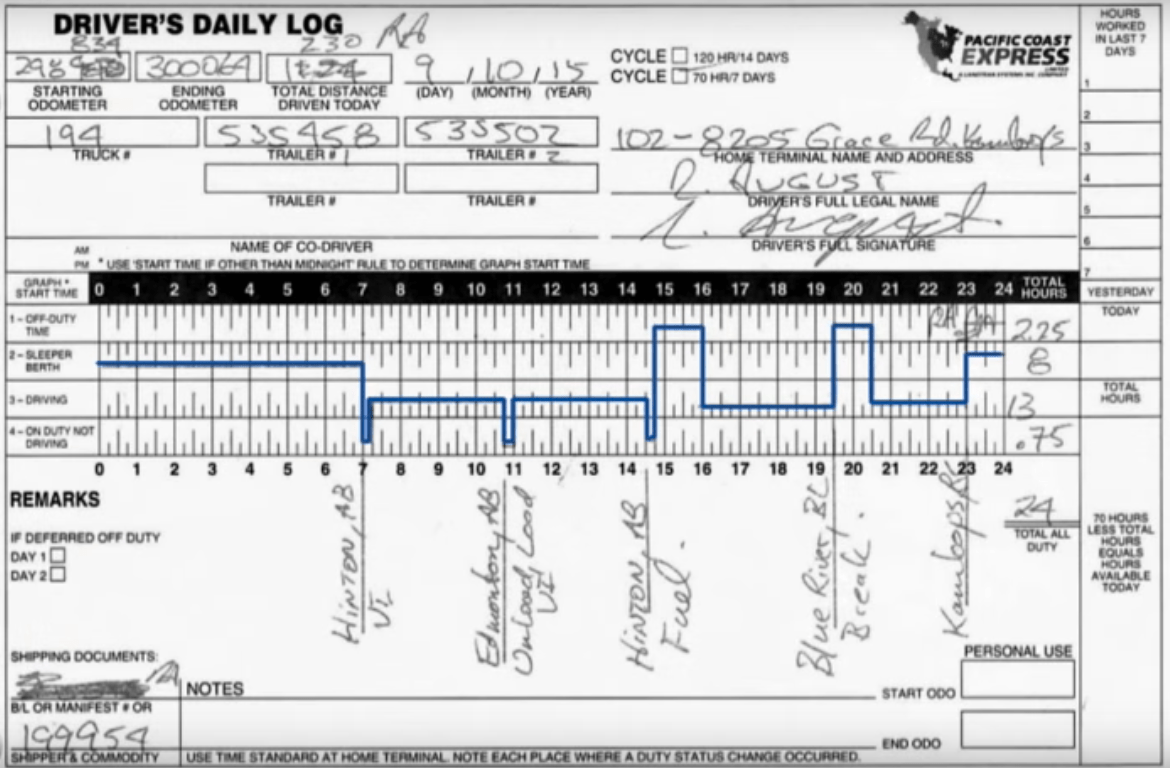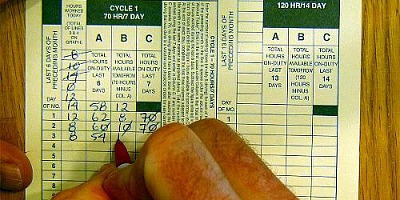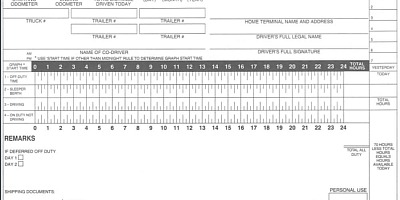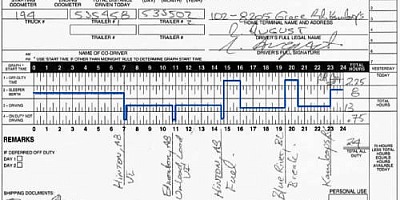Learn how to fill out the logbook graph correctly.
Log Books | Filling Out Graph—Canada & US
Updated Jan 2021
Introduction
For truck drivers and bus drivers, the number one way that you're going to get a fine is a violation in your log book.
To keep in compliance with hours of service regulations we're going to talk to you today about the graph.
In the previous video we talked about the information that goes around the graph and the reasons why that information needs to be filled in and how to fill that information.
Today we're going to talk about the graph.
So that if you get pulled into a scale, or pulled over by authorities you're not going to work for free.
Off-Duty
As you can see there are four lines on the log book: 1) the first line is off-duty.
You are not driving, you are not anywhere near the truck.
The truck is parked and you are away from the truck, that is the first line.
Breaks are logged as off-duty time.
Sleeper Berth
The next line is the sleeper.
If you are logging time in the sleeper berth, it must be a sleeper berth unit on a truck.
You can't be sitting in a seat or crouched over the steering wheel sleeping and log it as sleeper berth time.
It must be a manufactured sleeper berth that is on the back of the truck with a bed unit in it.
Don't Work the Day for Free:: DOT Weigh Scale Checklist |
||

• DID YOU KNOW? :: Bus & truck drivers are the only drivers that have their own police force (DOT, CVSE, MTO, etc.);• SMART :: There's a lot of paperwork you must produce for authorities at the weigh scale;• SELF-CONFIDENCE :: Bring all paperwork in one hit & impress the diesel bears! |
||
Because in most cases, it's you that gets the fine...NOT the company! |
 Driving
Driving
The next line is driving.
Any time that you are behind the controls of the vehicle, you are driving.
Even if you're stuck in traffic and have been sitting in congestion for two hours, you are driving.
So log it as driving time.
On Duty, Not Driving
The last‚ number four on the graph is on-duty, not driving.
Any time that you are doing safety sensitive duties where you responsible for the truck, the freight on that truck or on the side of the road attending to a crash on-duty, not driving.
Those are the four lines on the log book.
Use a Ruler
The first fundamental rule of log books: the ruler!
Always use a straight edge; use a ruler, get your bank card out - whatever you need to do to make the log book neat and legible - write legibly.
If you can't...if you're writing is not legible, print.
But use a ruler.
The line on the log book has to be a continuous line from midnight of the previous day to midnight of the day in which you're working and logging information.
When you use a ruler and you draw the graph, as you can see here in the video, put a point where you're going to draw the line to, put your ruler on, draw to the point.
That will help you to make sure that you draw the line to the exact space of seven fifteen, eight o'clock or whatever it is.
So use the point.
Conclusion
The lines on the log book‚the graph lines‚
1) off-duty
2) sleeper berth
3) driving time,
4) on-duty, not driving.
Those are the four lines on the on the log book.
Off duty and sleeper berth time are both off duty lines, however, sleeper berth time is in a unit that has a sleeper berth unit on it.
You can't can be sleeping in a seat, can't be slumped over the steering wheel, can't have a piece of plywood between the front seats - doesn't count.
Sleeper berth unit.
See Also: Log Books | Filling Out the Form







